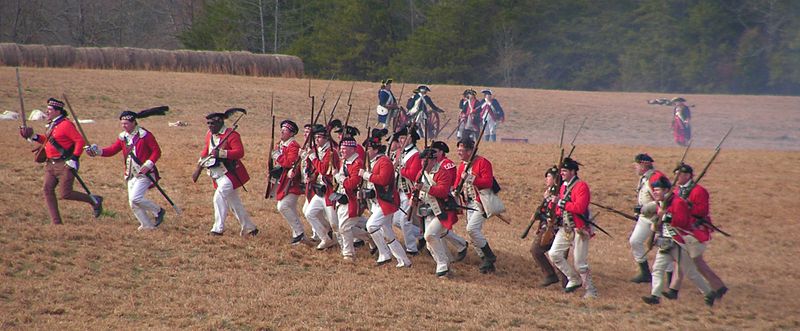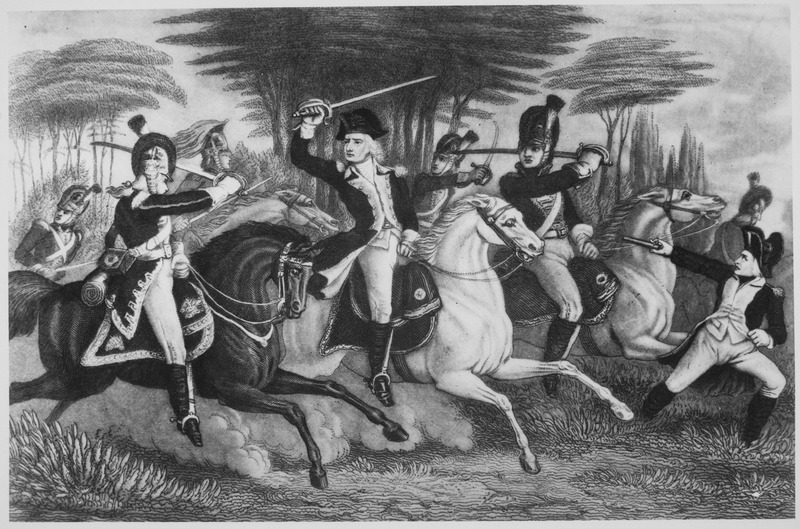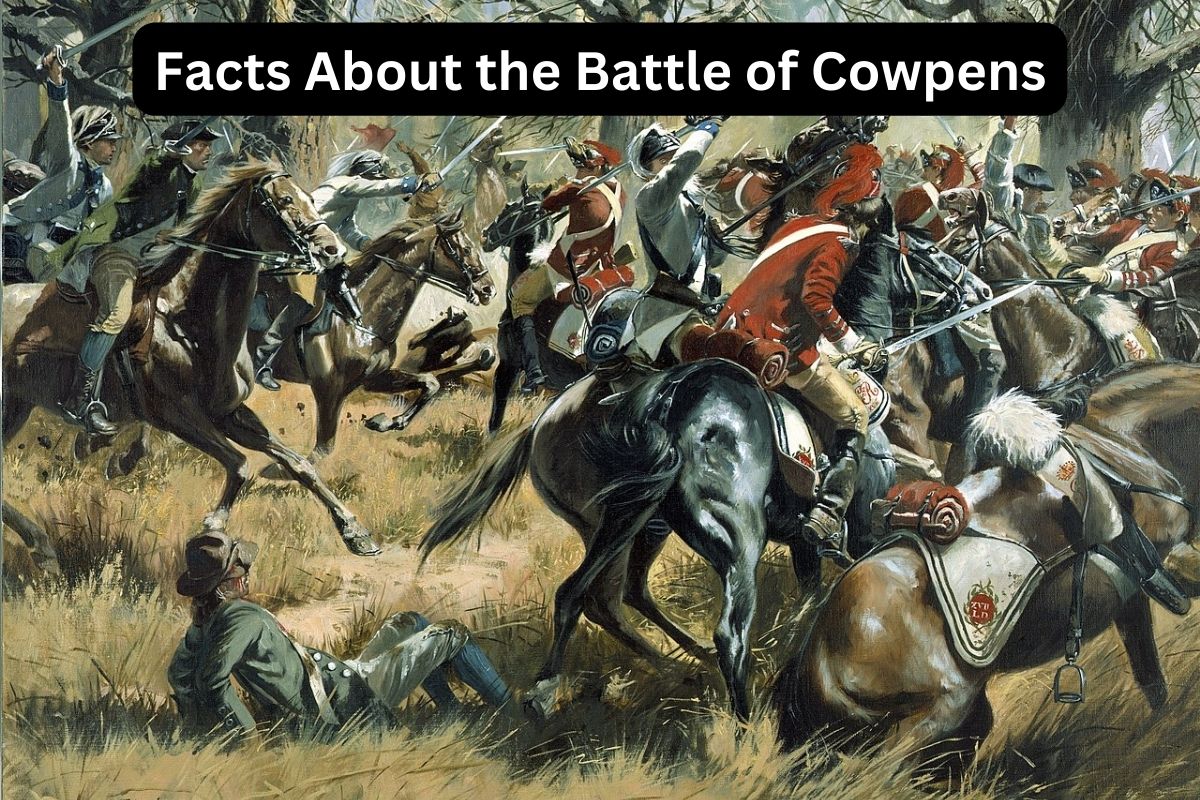The Battle of Cowpens, fought on January 17, 1781, during the American Revolutionary War, stands as a pivotal moment in the struggle for American independence.
Taking place near Cowpens, South Carolina, this clash between American and British forces showcased the tactical brilliance of General Daniel Morgan and the determination of the Continental Army.
Through a combination of strategic maneuvering, skilled marksmanship, and disciplined bayonet charges, the Americans secured a resounding victory over Lieutenant Colonel Banastre Tarleton’s British forces.
The Battle of Cowpens not only bolstered American morale but also marked a turning point in the Southern campaign of the war, ultimately contributing to the ultimate triumph of the American cause.
The Battle of Cowpens Facts
1. The Battle of Cowpens was fought on January 17, 1781, during the American Revolutionary War
The Battle of Cowpens took place on January 17, 1781, during the American Revolutionary War. It occurred in Spartanburg County, South Carolina, near a location called Cowpens, which was named after the local farmers’ practice of grazing their cattle on the open pasture there.

2. The American forces, led by General Daniel Morgan, consisted of Continental Army troops, militia, and cavalry
The American forces at Cowpens were commanded by General Daniel Morgan, a skilled and experienced officer. Morgan was known for his leadership abilities and had gained recognition for his role in the American victory at the Battle of Saratoga in 1777.
3. The British forces, commanded by Lieutenant Colonel Banastre Tarleton, were a mix of regular soldiers and loyalist militia
The British forces, led by Lieutenant Colonel Banastre Tarleton, consisted of a mix of regular soldiers from the British Army, including the famed British Legion, and loyalist militia units.
Tarleton was a young and aggressive officer who had gained a reputation for his actions in the southern theater of the war.
4. The battle was a decisive victory for the Americans
The Battle of Cowpens was indeed a decisive victory for the American forces. General Daniel Morgan’s strategy and the execution of his troops led to a resounding triumph over the British.
The American forces effectively disrupted and routed the British troops, inflicting heavy casualties and capturing many prisoners.
Also Read: Battle of Long Island Facts
The victory at Cowpens boosted American morale, weakened British control in the South, and played a crucial role in the overall American success in the Revolutionary War.

5. The American strategy at Cowpens involved the use of a double envelopment tactic
The American strategy at Cowpens was carefully devised by General Morgan. He planned to use the geography of the area, combined with his knowledge of the strengths and weaknesses of both his own troops and the British forces, to gain an advantage.
To execute his plan, Morgan deployed his forces in three lines. The first line consisted of militia, primarily composed of local volunteers from South Carolina and Georgia. These militia fighters were typically skilled marksmen who were familiar with the terrain and had experience fighting against Indian tribes.
The second line was made up of experienced Continental Army troops, including riflemen from Virginia, Maryland, and Delaware. These soldiers were well-trained and disciplined, and they were positioned behind a line of skirmishers to provide a solid defense.
The third line consisted of American cavalry, commanded by Lieutenant Colonel William Washington. This cavalry force included mounted militia and Continental Army dragoons. They were positioned on the American right flank, ready to launch a flanking attack on the British forces.
By deploying his forces in this manner, Morgan aimed to lure the British into pursuing and becoming entangled with the militia in the front line, creating a vulnerable situation for the pursuing British soldiers when they encountered the more disciplined and skilled Continental Army troops in the second line.
6. The militia in the first line fired a volley at the British and then retreated, drawing the enemy into a pursuit
As the Battle of Cowpens unfolded, the militia in the first line played a crucial role. They fired a volley at the approaching British forces and then strategically retreated.
This tactical maneuver was intended to draw the British into a pursuit, luring them further away from their main formation and disrupting their cohesion.

7. As the British pursued the retreating militia, they encountered the second line of Continental Army troops
Falling into the trap, the British pursued the retreating militia, expecting an easy victory. However, they soon encountered the second line of Continental Army troops.
These well-trained soldiers, armed with muskets and bayonets, unleashed a devastating volley of gunfire, causing significant casualties among the British ranks. Following the volley, the Continentals swiftly transitioned into a bayonet charge, catching the British off guard and creating chaos within their lines.
8. The American cavalry, led by Lieutenant Colonel William Washington, attacked the British flanks and rear
While the Continental Army troops engaged the British head-on, the American cavalry under the command of Lieutenant Colonel William Washington executed a flanking maneuver.
They attacked the British forces from the sides and rear, causing confusion and disrupting their formations. This unexpected assault further demoralized the British and added to the overall disarray of their troops.
9. The battle lasted less than an hour, but it resulted in a significant British defeat
The Battle of Cowpens resulted in substantial losses for the British forces. Approximately 110 British soldiers were killed, including some of Tarleton’s most experienced officers.
Additionally, 229 were wounded, and over 500 were captured or reported missing. In contrast, the American casualties were significantly lower, with approximately 70 soldiers killed or wounded.
10. The Battle of Cowpens marked a turning point in the Southern campaign of the Revolutionary War
The victory at Cowpens was a turning point in the Southern campaign of the Revolutionary War. It provided a much-needed morale boost to the American cause, which had suffered setbacks in the South.
The decisive American triumph shattered the myth of British invincibility, demonstrating that the Continental Army was capable of defeating British regulars in a set-piece battle.
The outcome of the battle encouraged more southern Americans to join the patriot cause, swelling the ranks of the Continental Army and weakening British control in the region.
The success at Cowpens set the stage for subsequent American victories at Kings Mountain and Guilford Courthouse, further eroding British dominance and ultimately contributing to the overall American victory in the Revolutionary War.
11. The victory at Cowpens encouraged more southern Americans to join the patriot cause
The victory at the Battle of Cowpens, along with its strategic impact, had a significant influence on the American Revolutionary War in the South. The triumph boosted American morale and demonstrated that the British could be defeated in open combat.
This success inspired more southern Americans to actively support the patriot cause, resulting in an influx of recruits and resources for the Continental Army.
12. General Morgan’s tactical brilliance and the performance of his troops were instrumental in the American victory
General Daniel Morgan’s leadership and tactical brilliance were instrumental in the American victory at Cowpens. Morgan’s ability to exploit the British pursuit and use the terrain to his advantage showcased his strategic acumen.
His decision to deploy the militia as a decoy and position the Continental Army troops and cavalry effectively highlighted his skill in orchestrating a coordinated and well-executed plan.
13. The battle demonstrated the effectiveness of American marksmanship and the superiority of rifles
The Battle of Cowpens highlighted the effectiveness of American marksmanship and the superiority of rifles over muskets, particularly in the hands of skilled backcountry riflemen.
The accuracy and range of the American rifles allowed them to inflict heavy casualties on the British forces before engaging in close combat. This marked a departure from traditional European warfare, where muskets were the primary firearm.
14. Cowpens was one of the first major battles where the Continental Army successfully engaged and defeated a British force in a set-piece battle
Cowpens was one of the first major battles in the southern theater of the Revolutionary War where the Continental Army successfully engaged and defeated a British force in a set-piece battle.
This victory served as a pivotal moment, shifting the momentum in the South and undermining British control in the region. It showcased the ability of the American forces to challenge and overcome their British counterparts, inspiring further resistance and strengthening the resolve of patriot forces.
15. The Battle of Cowpens set the stage for the subsequent American victories at Kings Mountain and Guilford Courthouse
The Battle of Cowpens had far-reaching consequences beyond its immediate impact. It set the stage for subsequent American victories, including the Battles of Kings Mountain and Guilford Courthouse.
These victories further weakened British control in the South, disrupted their supply lines, and destabilized their hold on the region. The series of triumphs in the southern theater ultimately contributed to the overall American victory in the Revolutionary War, as they prevented the British from effectively consolidating their control and forced them to divert resources elsewhere.
The strategic significance of Cowpens and its subsequent ripple effects played a crucial role in shaping the outcome of the war.
